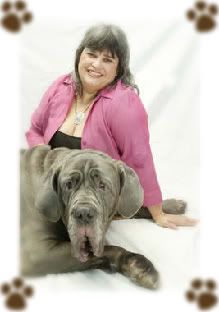I've got a client who took on a dog with severe proximity issues around other dogs. We've come to a bit of an empasse in the dog's rehabilitation because the owner's work pattern doesn't allow them to attend regular sessions. The owner feels really bad about this because they would love a dog who can just be let off the lead to frolic and play with other dogs.
This was my recent reply to them...
"Hi D****
I really understand the dilemma that owners have when faced with taking on a dog with issues. I've fostered plenty myself so know how stressful it can be, but I really can tell you that some dogs really don't want to be bothered by other dogs. They would much rather just play and work with their owners while on a walk. I think B*** is one of these dogs, at least at the moment. It's really important for us to separate what we think the dog would like from what the dog would tell you if he could speak.
Well, dogs can speak - in their body language - and at the moment, B****'s body language tells us loud and clear that he's not happy around other dogs.
I'll tell you a little story... When my boys were young I really wanted one of them to go into rugby. It's a great sport and I'm a qualified coach and I knew they'd really love it if they gave it a chance. To cut a long story short, they tried it and even got fairly serious about it, which was when I got fairly serious about it, hoping they'd get picked for the county, maybe even the national side! When they decided to give it up and move onto other things it was really difficult for me; I'd given up years of my life thinking that they were enjoying it, thinking that they had the same goals as me. It took me a long time to realise that they didn't have the same goals as me and my ideas of what they loved doing weren't the same as theirs.
We all want a dog we can slip off the lead and let go off to run about and play with other dogs and people. Well I can promise you that that kind of dog is becoming rarer and rarer these days because humans mess them up. B****'s previous owners really did mess him up and it's really unfair that you have to deal with the problems that someone else created. However if you accept that he's probably not going to develop into a dog from a Disney film for a very long time, if ever, then you will be able to let up on yourself a bit and simply enjoy B***** for what he is. A great companion to you and your family.
Yes it means you'll have to pick your walks carefully. Yes it means muzzling him. Yes it means having a long trailing line on him at all times. Does it mean he's going to be any less happy doing these things? Well that's SOLELY up to you. If you walk him feeling unhappy that he's not Lassie, then he'll probably have a rotten time too and yes, he will be unhappy, but not because he can't go charging off into the field, but because you're feeling sorry for him.
I'm fostering a dog a bit like B**** at the moment; has to be on a lead most of the time, can't be walked in busy dog-populated areas because of fear problems with some types due to a really bad upbringing by numpty owners etc. Does he have any less of a great time? No, because I make sure that these times with just me and him are really great times, where he can have my undivided attention, and explore every mouse or rabbit hole, he can hunt for food I drop out for him, we can run about and play chase with each other etc. Does he miss the company of other dogs? Why should he!!? I AM THE ONE THAT MAKES HIS TAIL WAG!!!
That's eventually how I'd like you to feel about being out with B*****. Don't feel sorry for him or wish he was some other kind of dog. Love the dog you're with, not the dog you wish you had. You'll really feel much happier about everything - and so will he.
~Jaq~"




























